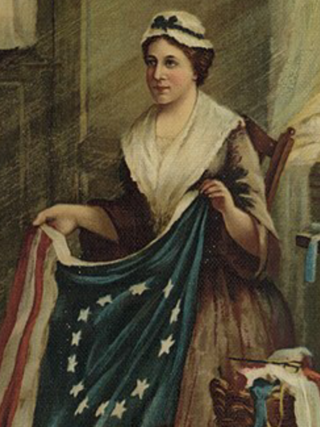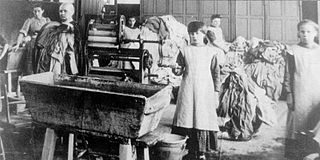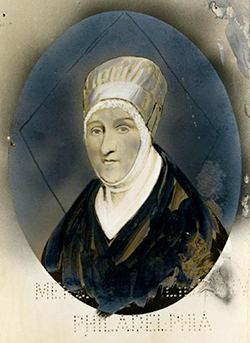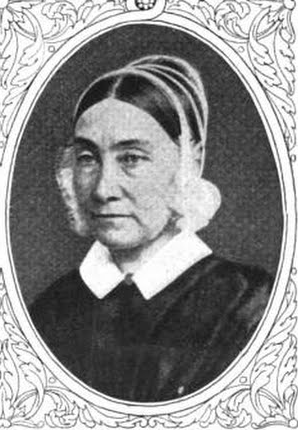
Elizabeth Fry, sometimes referred to as Betsy Fry, was an English prison reformer, social reformer, philanthropist and Quaker. Fry was a major driving force behind new legislation to improve the treatment of prisoners, especially female inmates, and as such has been called the "Angel of Prisons". She was instrumental in the 1823 Gaols Act which mandated sex-segregation of prisons and female warders for female inmates to protect them from sexual exploitation. Fry kept extensive diaries, in which the need to protect female prisoners from rape and sexual exploitation is explicit.

Magdalene asylums, also known as Magdalene laundries, were initially Protestant but later mostly Roman Catholic institutions that operated from the 18th to the late 20th centuries, ostensibly to house "fallen women". The term referred to female sexual promiscuity or sex workers, young women who became pregnant outside of marriage, or young girls and teenagers who did not have familial support. They were required to work without pay apart from meagre food provisions, while the institutions operated large commercial laundries, serving customers outside their bases.

Elizabeth Griscom Ross, also known by her second and third married names, Ashburn and Claypoole, was an American upholsterer who was credited by her relatives in 1870 with making the second official U.S. flag, accordingly known as the Betsy Ross flag. Though most historians dismiss the story, Ross family tradition holds that General George Washington, commander-in-chief of the Continental Army and two members of a congressional committee—Robert Morris and George Ross—visited Mrs. Ross in 1776. Mrs. Ross convinced George Washington to change the shape of the stars in a sketch of a flag he showed her from six-pointed to five-pointed by demonstrating that it was easier and speedier to cut the latter. However, there is no archival evidence or other recorded verbal tradition to substantiate this story of the first U.S. flag. It appears that the story first surfaced in the writings of her grandson in the 1870s, with no mention or documentation in earlier decades.

Pennsylvania Hospital is a private, non-profit, 515-bed teaching hospital located at 800 Spruce Street in Center City Philadelphia, The hospital was founded on May 11, 1751 by Benjamin Franklin and Thomas Bond, and was the first established public hospital and first surgical ampitheatre in the United States. and its first medical library. It is part of the University of Pennsylvania Health System.

William White was the first and fourth Presiding Bishop of the Episcopal Church of the United States, the first bishop of the Diocese of Pennsylvania (1787–1836), and the second United States Senate Chaplain. He also served as the first and fourth President of the House of Deputies for the General Convention of the Episcopal Church.

Thomas Story Kirkbride was a physician, alienist, hospital superintendent for the Institute of the Pennsylvania Hospital, and primary founder of the Association of Medical Superintendents of American Institutions for the Insane (AMSAII), the organizational precursor to the American Psychiatric Association. Along with Benjamin Rush he is considered to be the father of the modern American practice of psychiatry as a specific medical discipline. His directive and organization of institutions for the insane were the gold-standard of clinical care in psychiatry throughout the 19th century.

The Congregation of Our Lady of Charity of the Good Shepherd, also known as the Sisters of the Good Shepherd, is a Catholic religious order that was founded in 1835 by Mary Euphrasia Pelletier in Angers, France. The religious sisters belong to a Catholic international congregation of religious women dedicated to promoting the welfare of women and girls.

Thomas M'Clintock was an American pharmacist and a leading Quaker organizer for many reforms, including abolishing slavery, achieving women's rights, and modernizing Quakerism.
White-Williams Scholars is an education charity that assists underprivileged children in the Philadelphia, Pennsylvania area. It is one of the oldest charitable organizations in the United States. In 2011, White-Williams Scholars merged with Philadelphia Futures, another education organization in the area.

Lucretia Mott was an American Quaker, abolitionist, women's rights activist, and social reformer. She had formed the idea of reforming the position of women in society when she was amongst the women excluded from the World Anti-Slavery Convention held in London in 1840. In 1848, she was invited by Jane Hunt to a meeting that led to the first public gathering about women's rights, the Seneca Falls Convention, during which the Declaration of Sentiments was written.

Rhoda Coffin (1826–1909), was a Quaker social reformer, author, temperance crusader, and women's rights advocate who is best known for her efforts in prison reform. She held an integral role in establishing the Indiana Reformatory Institution for Women and Girls in 1869. It became the first female-controlled women's prison in the United States. She also served as president of the reformatory's board of managers. Coffin’s efforts on behalf of prison reform made her a leading figure in the national prison reform movement, and she traveled widely, wrote articles, and delivered speeches on the topic. She was also a champion of other causes that assisted women and children.

Caroline White was an American philanthropist and anti-vivisection activist. She co-founded the Pennsylvania Society for the Prevention of Cruelty to Animals (PSPCA) in 1867, founded its women's branch (WPSPCA) in 1869, and founded the American Anti-Vivisection Society (AAVS) in 1883.

Edna Buckman Kearns was a suffrage activist who worked on the 1915 and 1917 New York campaigns for votes for women, as well as the National Woman's Party campaign for the passage and ratification of the 19th amendment to the US Constitution.

The Magdalene Laundries in Ireland, also known as Magdalene asylums, were institutions usually run by Roman Catholic orders, which operated from the 18th to the late 20th centuries. They were run ostensibly to house "fallen women", an estimated 30,000 of whom were confined in these institutions in Ireland. In 1993, unmarked graves of 155 women were uncovered in the convent grounds of one of the laundries. This led to media revelations about the operations of the secretive institutions. A formal state apology was issued in 2013, and a compensation scheme for survivors was set up by the Irish Government, which by 2022 and after an extension of the scheme had paid out €32.8 million to 814 survivors. The religious orders which operated the laundries have rejected appeals, including from victims and Ireland's Justice Minister, to contribute financially to this programme.

Deborah Norris Logan was an American Quaker historian and memoirist, and wife of politician George Logan.

The Glasgow Magdalene Institution was an asylum in Glasgow, Scotland, initially started in 1812 and was open until 1958.

Sarah Pugh was an American abolitionist, activist, suffragist, and teacher. She was involved with promoting the free produce movement, including a boycott on sugar produced by slave labor. She was a leader of the Philadelphia Female Anti-Slavery Society from its earliest days in 1835 until it closed in 1870. Along with Lucretia Mott, Pugh was one of the delegates to the World Anti-Slavery Convention in London who were denied their seats because they were women.
Emma Sheppard (1813–1871) was an English writer and workhouse reformer in Frome, who became widely known for her book Sunshine in the Workhouse and for efforts, both local and national, to improve conditions for inmates.
Dublin Female Penitentiary, was a reform institution for "fallen women" in Dublin, Ireland. It established in 1810 and opened in 1813, it was run by the Church of Ireland and located between Berkeley Road, Eccles St. and North Circular Road. The Asylum could cater for over 40 inmates. It was administered by a Committee of ladies, for the religious and moral improvement of the women. While inmates were from all religious backgrounds, they had to adhere to the rules of the house and were instructed in the reformed faith. As with many protestant benevolent initiatives, many laywomen were involved. Mrs. Paulus Aemilius Singer of Temple Street, served as secretary of the committee, was a notable supporter of the institution. Penitents were employed in a laundry washing and mangling, and also needlework, hatmaking and mantua-making. As with other similar institutions the penitentiary was affiliated to a chapel. There was a Repository where the penitents' work was sold, with income used to fund the institution. After eighteen months places outside the laundry were sought for an inmate. Some inmates were sent to Queensland, Australia.
Anne Parrish (1760–1800) was an American Quaker philanthropist. Following the 1793 yellow fever epidemic in Philadelphia, she devoted herself to philanthropy and co-founded a women's relief society for the poor. The Female Society for the Relief of the Distressed, founded in 1795, was one of the first charitable women's organizations in the United States. Parrish also establish a free school for girls in her home in 1796. The school expanded over the years, later becoming the Aimwell School which lasted until 1923.
De Cunzo, Lu Ann. Reform, Respite, Ritual: An Archaeology of Institutions; The Magdalen Society of Philadelphia, 1800-1850, published in Historical Archeology, volume 29, no. 3 (1995).















